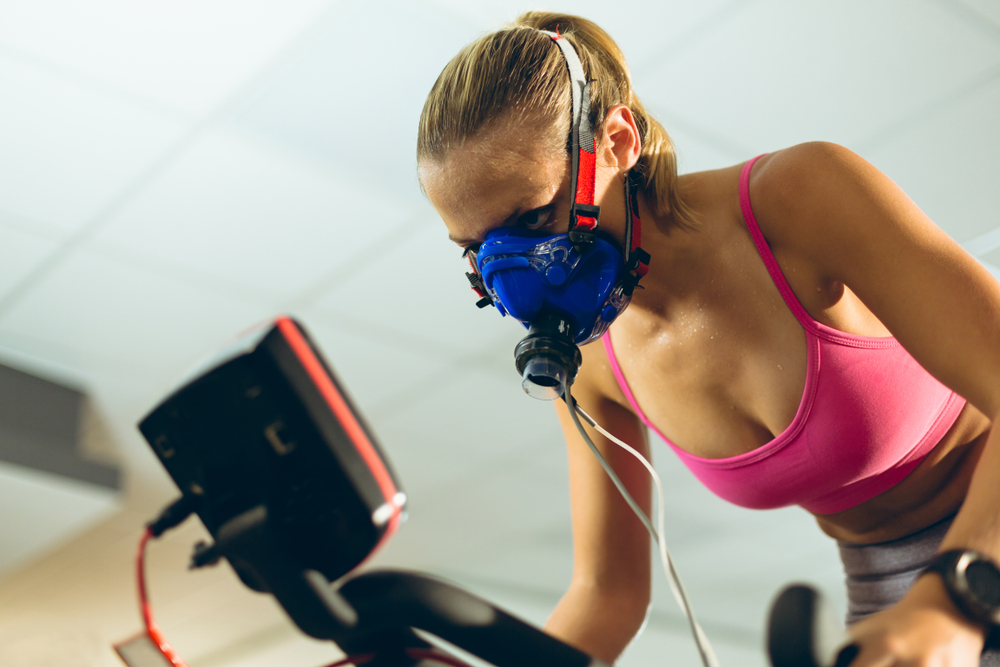By Dr. Nick North PT, DPT, MS

. . .
Health. Wellness. Fitness. Performance. These are all terms that we’ve all heard regularly throughout our lives. We’ve all probably used them at some point, whether correctly or not. But definitions are important when parceling out the nuanced differences of terms that we’ve all grown accustomed to, particularly regarding our well-being and how it relates to our participation in our passions (endurance athletics). In medical school, I had a professor that would (justifiably) proclaim say
what you mean, and mean what you say. This phrase goes beyond the elementary notion of tell the truth; it urges us all to better understand and define our thoughts for the sake of clear communication and direction of action. Since my career focus has lately expanded from just health to wellness, fitness, and performance, I’ve come to ponder the specifics of each term. Let’s now take a closer look at each of these words, so we might all improve our definitions, and know exactly what we are looking to improve in our lives.
. . .
When you hear the word health, you might conceive an ethereal notion of “being physically good,” or “not being sick.” And you wouldn’t really be incorrect with that vagary. Health is defined by the Oxford English Dictionary as the state of being free from illness or injury. But to expand on that meaning a bit, the World Health Organization regards health as a state of complete physical, mental, and social well-being and not merely the absence of disease or infirmity. The term almost implies a Zen-like state of utopian contentment if you really think about it. Perhaps we need to get more clinical, and examine what Johns Hopkins Medicine considers to be the 4 Pillars of Health:
- Physical Activity/Exercise: the movement we perform daily that maintains muscle function, bone strength, cardiovascular fitness, energy balance, and mood.
- Nutrition: the nutrients that we intake to provide us with energy, structure, and essential biological functions.
- Sleep: the rest we take each night to recover our tissues, replenish our energy, process our emotions, and maintain proper hormonal control through diurnal cycling.
- Behavioral Health/Stress: our environmental stressors, our feelings, our connections to other people, and how we respond to these factors in each moment.
Given these specific parameters, we can see that health can be better compartmentalized and thus more easily understood. Put good things into your body. Move your body often. Get plenty of rest. And don’t sweat the small stuff. Sure, you might encounter a few illnesses, injuries, or conditions along the road that might impede your progress, but that’s why we have professionals to help. And guess what; the more we honor those 4 pillars, the less likely we are to get bumped off track in the first place.

Surely, there must not be much of a difference between health and wellness, right? We use the two terms largely interchangeably these days. Even the Oxford English Dictionary defines wellness as the state of being in good health, especially as an actively pursued goal. But the Global Institute of Wellness has a much more in-depth definition for the term. According to them, wellness is the active pursuit of activities, choices and lifestyles that lead to a state of holistic health. By the Institute’s terms,
wellness is a continuum that extends from illness on one side, to well-being on the other. On one end, patients with poor health engage the medical paradigm to treat illnesses; they interact reactively and episodically with doctors and clinicians who provide care. On the opposite end, people focus proactively on prevention and maximizing their vitality. They adopt attitudes and lifestyles that prevent disease,
improve health, and enhance their quality of life and sense of wellbeing. In other words, wellness is proactive, preventive, and driven by self-responsibility.
As a clinician first, I’m most familiar with wellness as being defined/divided into a model of dimensions. Some models offer as few as 6 dimensions, some as many as 12. However, the 8 Dimension model is considered the most popular model, as outlined by Stoewen below:
- Physical Dimension: Caring for your body to stay healthy now and in the future.
- Intellectual Dimension: Growing intellectually, maintaining curiosity about all there is to learn, valuing lifelong learning, and responding positively to intellectual challenges.
- Emotional Dimension: Understanding and respecting your feelings, appreciating the feelings of others, and managing your emotions in a constructive way.
- Social Dimension: Maintaining healthy friendships and intimate relations, caring about others, and letting others care about you.
- Spiritual Dimension: Finding purpose, value, and meaning in your life with or without organized religion.
- Vocational Dimension: Preparing for and participating in work that provides personal satisfaction and life enrichment that is consistent with your values, goals, and lifestyle.
- Financial Dimension: Managing your resources to live within your means, making informed financial decisions and investments, and preparing for short-term and long-term needs or emergencies.
- Environmental Dimension: Understanding how your environments (natural, constructed, and social) affect your health and well-being, and doing your part to improve your local/regional/and global ecosystem.
Through examination of these 8 Dimensions of Wellness, we can see that the term really does expand far beyond just your body and mind. Wellness, as a term, is meant to encompass all (or at least most) of what it means to be human. How you interact with others, how you pray (or not) to a higher power, how you invest your resources, even down to which toilet paper you buy (bamboo vs. recycled);
it’s all considered here. So, with regards to how we define our initial 4 terms, wellness is really about the activities that you pursue throughout your lifestyle to be a better you, all around.

. . .
OK, we’re entering some familiar territory when we talk about fitness, right? We all have an idea of what a fit person appears to be. Stronger, faster, leaner, healthier! Oh no, we’ve brought the term healthy into our definition, and that might muddy the waters more than it helps. Let’s look back at the Oxford English Dictionary in effort to clear things up. One definition of fitness is an organism’s ability to survive and reproduce in a particular environment. While that’s very technically true, perhaps
that’s a bit too clinical. Moving on, a second definition is the quality of being suitable to fulfill a particular role or task. What is the task we are referring to here? Human life. How do we define being more suitable for human life, when that’s such a broad arena? Once, more, we’ll need to look elsewhere for more specificity. The American College of Sports Medicine (ACSM) gives the following definition of health-related
physical fitness: Physical fitness is defined as a set of attributes that people have or achieve that relates to the ability to perform physical activity. To expand a bit on this definition, Wilder et al. regards fitness as characterized by (1) an ability to perform daily activities with vigor, and (2) a demonstration of traits and capacities that are associated with a low risk of premature development of hypokinetic diseases. We’re on the right track. Vigor in daily life (particularly with physical activity), along with a
reduced risk of disease states related to inactivity. But exactly how can we live with vigor and lower our risk of sedentary illness? ACSM comes to the rescue with a clear list of the 5 Components of Fitness:
- Body Composition – the relative percentage of fat mass and fat-free mass on the body.
- Muscular Strength – the ability of the muscle to exert force (typically in a 1-3 repetition maximum).
- Muscular Endurance – the muscle’s ability to continue to perform for successive exertions or many repetitions (> 12).
- Flexibility – the ability of a joint to move through its complete range of motion.
- Cardiorespiratory Capacity – the body’s ability to perform large muscle, dynamic, moderate/high-intensity exercise for prolonged periods.
With such clearly defined components, we need to look no longer. To be honest, as a Doctor of Physical Therapy and Exercise Physiologist, I’ve been familiar with the 5 components of fitness for quite some time now. When I think about someone who has great well-rounded fitness, I conceive an image of low body fat, high-performing muscular strength and endurance, full-body flexibility, and sustained activity stamina. These are all measurable fitness characteristics that can be assessed in the clinic/studio. And as endurance athletes, we may place a heavy focus on our bodies’ capacity for component #5 (maybe with some bias on #1 and #3 as well). But it’s important to remember that we are all human athletes as well, and we should strive to be prepared for a diverse set of physical challenges every day besides just rocking the swim/bike/run by working on each and every component of fitness in our weekly training plan.

. . .
In consideration of the term performance, I’d like to specify that we’re talking about athletic or sports performance here. There are, after all, many ways in which to regard performance. Job performance, mechanical performance, theater performance, etc. To return to the (largely unhelpful) Oxford English Dictionary, we can see that the broad term performance is defined as the action or process of carrying out or accomplishing an action, task, or function. Unlike the term fitness, athletic performance is truly a term that I have questions about. Being more fit will make you a better athlete, right? In some cases, yes, but in other cases, the waters again get muddled. Having a high lactate threshold and a low body fat percentage probably won’t help much with winning an Olympic Table Tennis match. So, what are the puzzle pieces that will allow you to excel at sports, in specific and in general? The World of Sports Science (WSS) states that sports performance is a complex mixture of biomechanical function, emotional factors, and training techniques. Some clarity begins to form. WSS goes on to specify that there are 4 Prime Components of Sports Performance, with many subcomponents under each. Let’s take a look at those 4 Components below, with a few examples of subcomponents underneath.
- Neuromuscular
o Body size, composition, and proportion
o Muscular strength and power
o Muscular speed
o Endurance (muscular and cardiorespiratory)
o Reaction time
o Proprioception (agility/coordination/balance)
o Rhythm or cadence - Psychological
o Emotional control
o Logic and analysis
o Discipline
o Motivation
o Creativity
o Focus (alertness and acuity) - Environmental
o Weather
o Surface conditions
o Social pressure
o Equipment condition - Coaching/Support
o Technique - o Tactics
- o Training
- o Nutrition
- o Rest/recovery
- o Life assistance
- o Social/emotional support
- We can see here that athletic performance does include many of the same components of fitness, within the neuromuscular category. But that category also includes some specifically neurological factors such as reaction time, proprioception, and rhythm. Not to mention the extension of neurology into the realm of psychology and behavior, with the somewhat abstract factors of emotion control, motivation, creativity, and focus. In fact, the term factor is a great substitute for component
- when it comes to talking about sport performance, because here we can see that there are external factors to an athlete’s performance, such as the weather, the condition of their equipment, the quality of coaching, and the amount of love and support they receive at home. It really does take a village to raise an athlete, and maybe a little bit of luck too.
Congratulations, you now have a decent understanding of the nuanced differences between health, wellness, fitness, and performance. We can see, through careful examination of each term, that there is some overlap and interplay between definitions. Practicing the 4 Pillars of Health will help to keep you free of disease, which will allow you to pursue Dimensions of Wellness with less burden. Being
healthy in general will also ease your pursuit of fitness. Being both healthy and fit will assist in your pursuit of wellness, but those terms primarily exist within the physical dimension, and you’ll need to consider many other dimensions of wellness in order to maximize your human experience. And while many aspects of health, fitness, and wellness may be considered as factors towards your athletic performance, there are also many performance factors that are extrinsic to your being, and even uncontrollable.
Do you feel overwhelmed yet? It is a bit complicated when you look at the big picture. When I think about self-improvement, I want to be healthier, have more wellness, be more fit, and be a better athlete. But there are SO MANY pillars, dimensions, components, and factors to consider that it’s all too easy to get lost in the weeds. But I’d like to recommend that you break it down. Take one month (or several) to examine one term. Whether it’s health, wellness, fitness, or performance, break the term down into its respective categories, and take a week or so to examine how you can build better habits within that category. Trust me, even regarding the environmental factors of sports performance, there are things that you can do to boost your chances of success. Take your time, do some research, get creative, and don’t be afraid to recruit your friends and family for help. And remember, when it comes to getting professional help with your health, wellness, fitness, and performance, we here at Bowen Sports Performance have got you covered with our comprehensive list of services. Whether it’s an Annual Health Checkup, a 10-Week Wellness Coaching Program, Exercise or Nutrition training, Cycling Skills Sessions, or the best tailored Bike Fit you’ve ever experienced, all you have to do is ask.
References
American College of Sports Medicine. (2006). ACSM’s Guidelines for Exercise Testing and Prescription,
7th Ed. Philadelphia, PA: Lippincott Williams & Wilkins.
Global Wellness Institute. (2023, April 25). What is Wellness. Retrieved from Global Wellness Institute: https://globalwellnessinstitute.org/what-is- wellness/#:~:text=Emotional%3A%20Being%20aware%20of%2C%20accepting,our%20communit
ies%20in%20meaningful%20ways.
Johns Hopkins Medicine. (2023, April 21). Johns Hopkins All Children’s Hospital. Retrieved from Pillars to
a Healthy Lifestyle: https://www.hopkinsallchildrens.org/Healthy-Weight-
Toolkit#:~:text=At%20Johns%20Hopkins%20All%20Children’s,%2C%20Sleep%2C%20and%20Beh
avioral%20Health.
Oxford English Dictionary. (2023, April 21). Oxford English Dictionary. Retrieved from Oxford English
Dictionary: https://www.oed.com/
Stoewen, D. L. (2017). Dimensions of wellness: Change your habits, change your life. The Canadian
Veterinary Journal, 58(8), 861-862.
Wilder, R. P. (2006). Physical fitness assessment: an update. J Long Term Eff Med Implants, 16(2), 193-
204.
World Health Organization. (2023, April 21). Constitution. Retrieved from World Health Organization:
https://www.who.int/about/governance/constitution#:~:text=Health%20is%20a%20state%20of,belief%
2C%20economic%20or%20social%20condition.
World of Sports Science. (2023, May 1). Sport Performance. Retrieved from Encyclopedia.com:
https://www.encyclopedia.com/sports/sports-fitness-recreation-and-leisure-magazines/sport-
performance#:~:text=Sport%20performance%20is%20a%20complex,progression%20toward%20
excellence%20or%20achievement.
